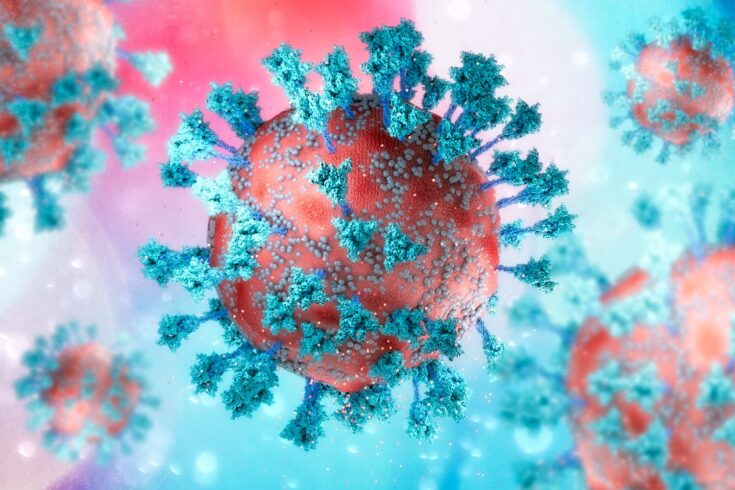With COVID-19 booster vaccines now being rolled out, we are reminded of the swift response by researchers when the pandemic started which saw vaccines being produced in record time. What you may not know is that a team of experts from Scientific Computing at the Science and Technology Facilities Council (STFC), along with the UK’s supercomputing capability, were supporting medical researchers every step of the way.
Expertise and computing power combined
HECBioSim is a consortium which was created to promote the use of high-end computing resources by the biomolecular simulation community. They provide access to the high-powered computing services in the UK for bio-simulation scientists, but just as importantly they provide the technical skills and resources to use the facilities.
When the COVID-19 pandemic began, the HECBioSim community already had an established community of academics and were able to coordinate them into groups and provide high performance computer access.
Access was given to ARCHER, the national supercomputer at the EPCC in Edinburgh (which has since been superseded by ARCHER2), as well as JADE (now superseded by JADE2) at Daresbury Laboratory which is managed there on behalf of the University of Oxford and Bede at Durham University. They were also able to give scientific and technical expertise alongside the access for swift research into the SARS-CoV-2 virus.
The pivotal protein
There was, and continues to be, much research around COVID-19 which has utilised the supercomputing capabilities in the country. One piece of research focused on the RNA helicase protein known as NSP13. The NSP13 protein belongs to the helicase superfamily of proteins. Its function is to unwind viral ribonucleic acid (RNA) for transcription and ultimately for replication.
RNAs are present in human cells, they are structurally similar to DNA but are usually a single strand.
Helicase proteins are present in bacteria and viruses, and in this case are involved in shaping the form of NSP13.
NSP13 was already on the radar of medical researchers prior to the COVID-19 pandemic for various reasons. It is made by the severe acute respiratory syndrome coronavirus 2 (SARS-CoV-2) agent, and this is the virus which causes the COVID-19 disease.
The coronaviridae is a family of RNA viruses, some of which we already knew about. Before this pandemic, we already knew that NSP13 was present in both SARS-CoV (the first SARS outbreak) and also in MERS-CoV, the Middle East Respiratory Syndrome known as MERS. In the case of SARS and COVID-19, the NSP13 helicase differed by only a single amino acid.
NSP13 is also structurally very similar to proteins within human cells. So it is important to understand how we can develop drugs which can attack NSP13 but leave human cells healthy.
Findings
The research showed that the protein of interest, the NSP13, had a structure which was no more than 20% similar to proteins outside of the coronaviridae family.
This is important in the development of anti-viral drugs. Anti-viral drugs are used to treat people suffering with the disease, unlike a vaccine which is used to prevent us catching it in the first place.
Researchers found that there are areas of the protein which bear little resemblance to human proteins, those areas could be a target for anti-viral drugs. Drugs could be designed to target these parts of NSP13 leaving the virus unable to replicate, while leaving human proteins in your body untouched.
Abisola Adesalu, a third-year medical student from the University of Leeds, recently completed a 12-week placement in the Scientific Computing Department of STFC’s Daresbury Laboratory. In that time, Abisola created research highlights to shine a spotlight on some of the work of the HECBioSim consortium. Find out more about Abisola’s findings.

Credit: STFC
James Gebbie, Senior Computational Scientist at STFC said:
We can see from this research just how important it is to be able to understand the function of proteins within viruses in the race to find new treatments.
It is vital to these research communities that we continue to support them, both with well configured computing hardware and its software along with technical and scientific expertise to make best use of them.
Abisola joined us this summer and she was tasked with teasing out some of the details of 2 studies our HECBioSim consortium helped to underpin. Abi comes from the medical school at Leeds, and she used her considerable medical knowledge to look at these impact studies in a completely different light to how we as scientists normally would.
As you can see, she has done a fantastic job in explaining this research and making it accessible to a wide audience.
She had full creative freedom, and her work will be replicated across many more highlights in future enabling us to tell the story on how we helped to understand the COVID-19 pandemic, and now things are back to normal in the research world, how we underpin many other research studies.
Future research
The research on the RNA helicase has provided a solid foundation for more research into creating antivirals which work specifically on the COVID-19 disease.
HECBioSim is managed by experts from STFC Scientific Computing and leading academics from UK universities. It is funded by the Engineering and Physical Sciences Research Council.



